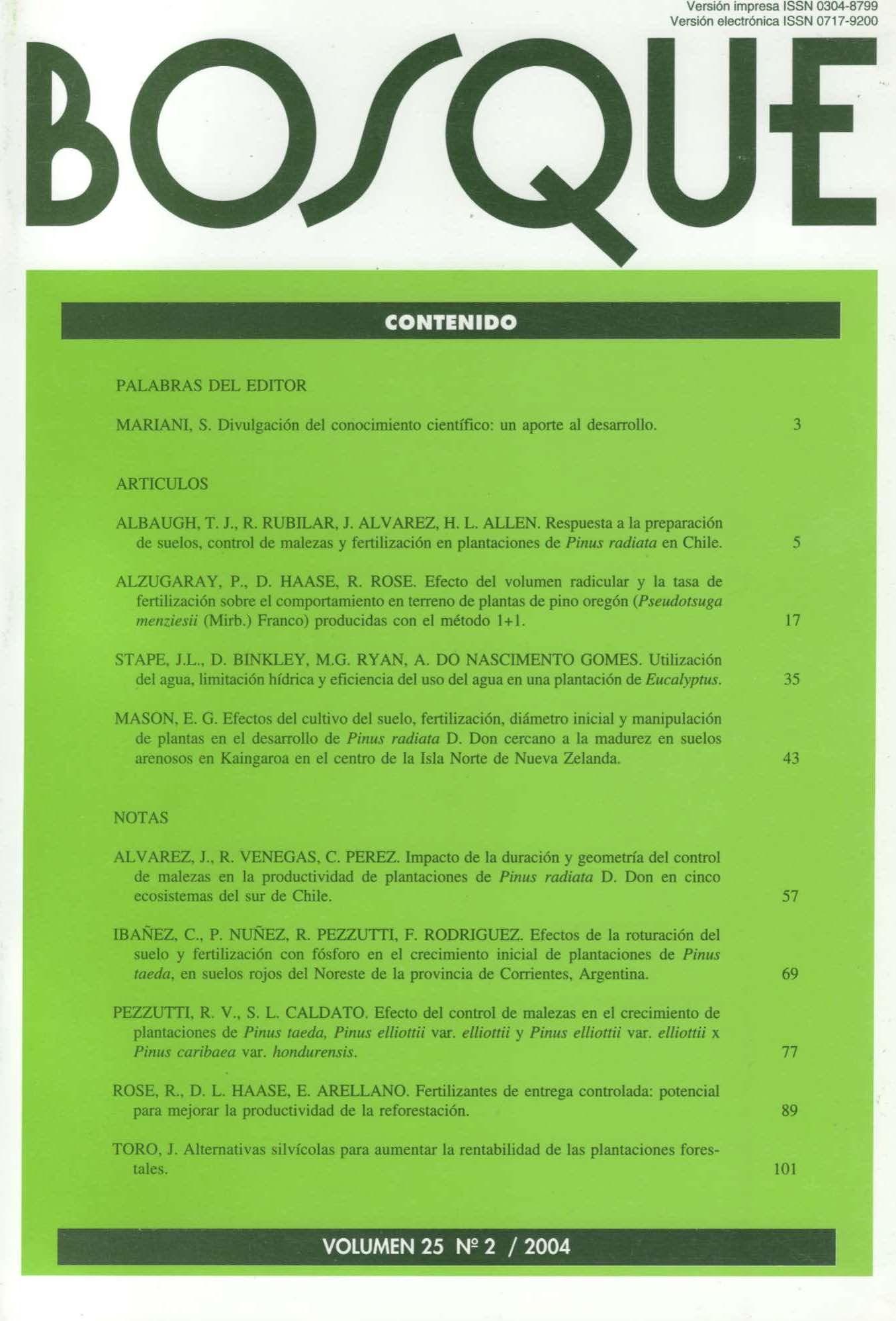The impact of duration and geometry of weed control in productivity of Pinus radiata plantations in five southern ecosystems of Chile
Main Article Content
Abstract
The effect of weed control on the initial plantation productivity of Pinus radiata D. Don was investigated in five representative southern ecosystems of Chile. Different periods without interference (0, 0+1, 0+1+2) and the geometry of control (total, band, spot, nil) were evaluated during the first four to six years after establishment. The best results for volume were total and band weed control. The volumes did not differ for granitic (alfisol) and metamorphic soils (ultisol) from one to three years without interference. In sandy soil (entisol), three periods with weed control were best, and in volcanic ash soils (andisols) there were no differences between one and three periods weed free. In red clay soils (alfisols) the best strategy was two periods weed-free. The economic analysis suggests site specific prescriptions: one control over the total surface in sandy soil, two years of band control in more humid ecosystems or those with high productivity potential. Recommendations and future lines of work in this field are discussed.

